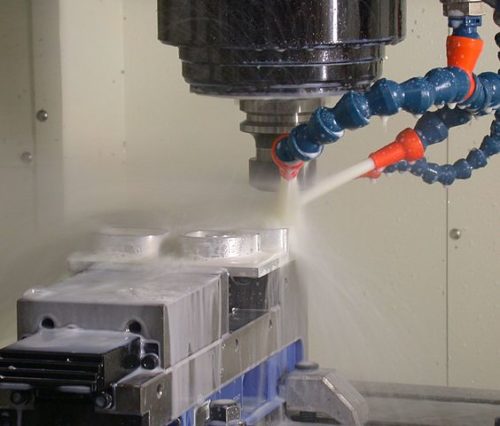
Various functions of cutting fluids
1. Cutting fluid cools the work piece and tool by carrying away the heat generated during machining.
2. It acts as lubricant at the friction zones, hence tool life increases.
3. As friction get reduced, the forces and electricity power consumption decreases.
4. Using cutting fluids produces better surface finish to the work piece.
5. It causes to break the chips into small pieces.
6. It washes away the chips from the tool.
7. It prevents the corrosion of chips and machine.
8. Improves dimensional accuracy and control on the work piece.
9. It permits maximum cutting speed hence the time for machining reduce and cost of manufacturing increases.
Properties to be possessed by the cutting fluids
1. Cutting fluids should have low viscosity to permit free flow of the liquid.
2. It should posses good lubricating properties.
3. It should have high specific heat, high heat conductivity and high heat transfer coefficient.
4. It should be non-corrosive to work and machine.
5. It should be non-toxic to operating person.
6. It should be odourless.
7. It should stable in use and storage.
8. It should be safe.
9. It should permit clear view of the work operation.
Most commonly used cutting fluids are
1. Cast Iron: No cutting fluids are used.
2. Steels: Lord oil with mineral oil is used.
3. Alloy steel: Sulphur brass oil with mineral oil is used.
4. Copper: Soluble oil with 90 to 95% of water is used.
5. Aluminium: Mineral oil with soluble oil cutting fluids are used as cutting fluids.


